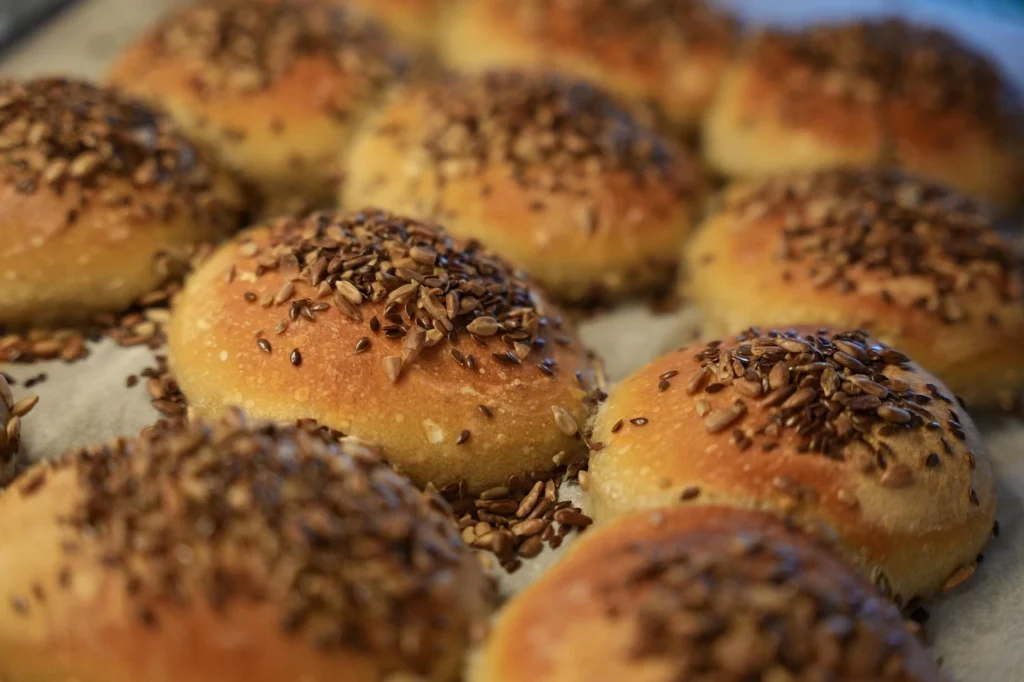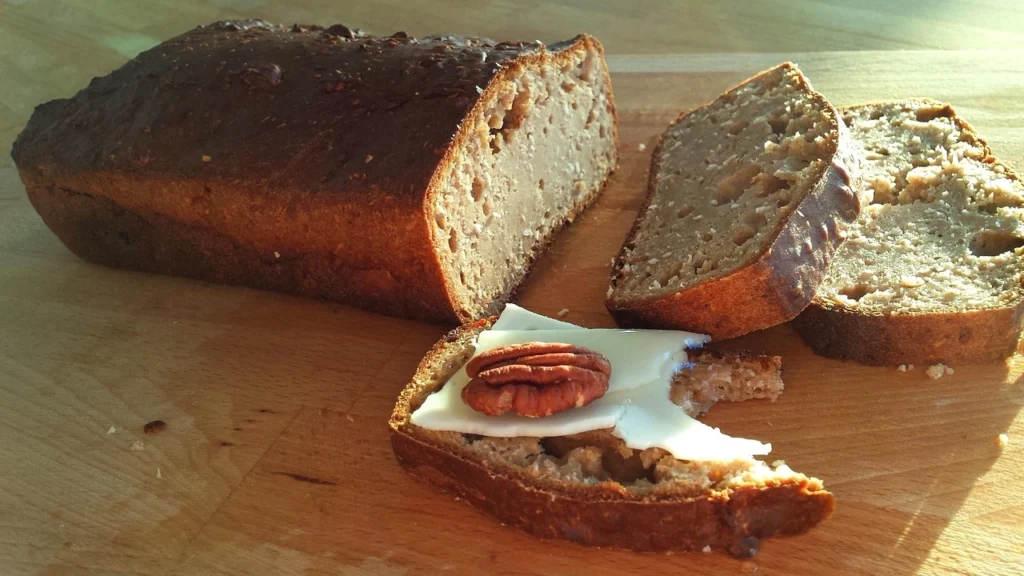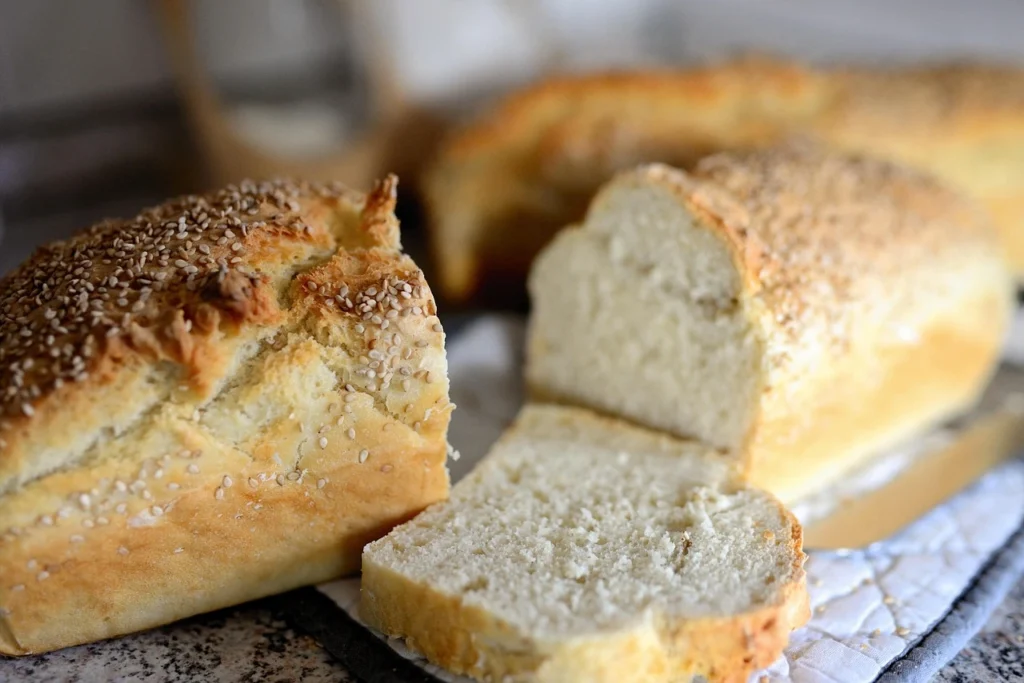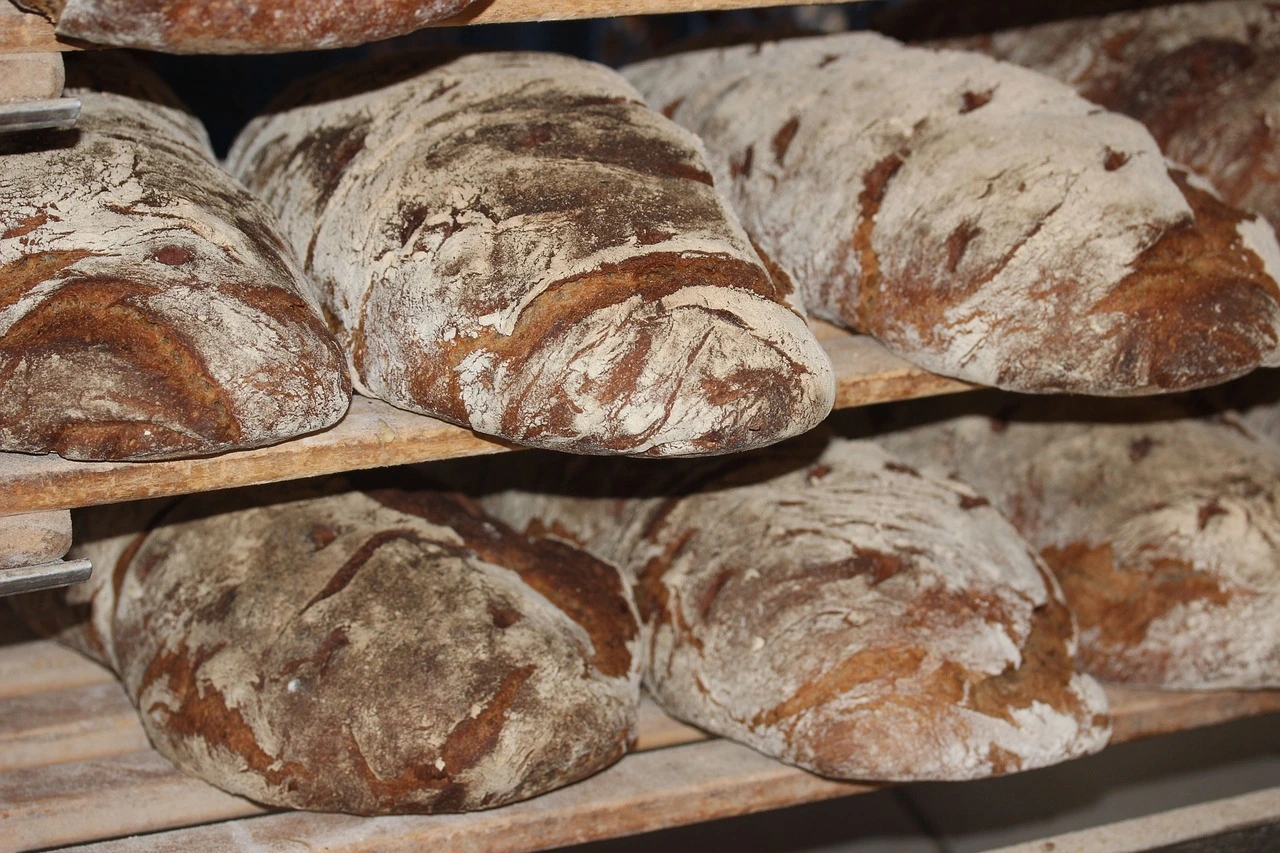Bread holds a deep spiritual and cultural significance in the Bible. It was more than just daily food — it symbolized life, sustenance, and God’s provision. In ancient times, bread was a central part of every meal in Israelite households, often referred to in scripture as the “staff of life.” The Bible mentions many types of bread, from unleavened bread eaten during the Passover to Ezekiel bread made with a unique combination of grains and legumes.
Throughout both the Old and New Testaments, bread carries powerful meaning. It was used in religious rituals, offerings, and miracles — such as when Jesus fed the 5,000 with five loaves of bread and two fish. The Lord’s Prayer even includes the famous line: “Give us this day our daily bread,” highlighting its importance in daily life and faith.

This article will guide you through traditional Bible bread recipes that connect us to ancient times. You’ll learn about the ingredients used, methods of preparation, and how you can make authentic biblical bread at home. These recipes not only offer a taste of history but also remind us of the timeless value of simple, nourishing food shared in faith and community.
Table of Contents
The Role of Bread in Ancient Israelite Culture
In ancient Israelite culture, bread was more than just food — it was a symbol of life, community, and God’s blessings. Bread was a staple in every household and featured in almost every meal. For the Israelites, bread was essential for survival in a land where agriculture played a central role in daily life.
Most families in ancient Israel grew their own grains, such as wheat, barley, spelt, and millet. These grains were harvested, ground into flour, and baked into bread using simple tools like grinding stones and clay ovens called tannurs. Bread-making was a daily task, usually performed by women, and required patience, skill, and time.
Bread was also deeply connected to religious practices. In the Old Testament, God commanded the Israelites to prepare unleavened bread (bread without yeast) during Passover to remember their quick escape from Egypt. In the Tabernacle and later in the Temple, “Showbread” or the “Bread of Presence” was placed on a special table as an offering to God, symbolizing His provision for His people.
Socially, bread was often used in acts of hospitality. Sharing bread with someone was a sign of friendship, peace, and covenant. Breaking bread together showed unity and fellowship.
Furthermore, bread was associated with God’s miraculous provision, such as manna — the bread from heaven — that sustained the Israelites during their journey in the wilderness.
In summary, bread in ancient Israelite culture was more than physical nourishment — it was a powerful symbol of God’s care, faithfulness, and the daily connection between the people and their Creator. Today, recreating biblical bread recipes allows us to experience this ancient tradition and appreciate the simplicity and meaning behind this humble food.
Biblical References to Bread
Bread is one of the most frequently mentioned foods in the Bible, appearing in both the Old and New Testaments as a symbol of life, sustenance, and God’s provision. The significance of bread goes beyond nourishment — it represents spiritual truths, divine miracles, and God’s covenant with His people.
Bread in the Old Testament
In the Old Testament, bread is often associated with God’s care for the Israelites. One of the earliest and most famous references is the story of manna — the miraculous bread from heaven (Exodus 16:4) — provided by God to feed the Israelites during their 40-year journey in the desert. This bread symbolized God’s daily provision and His ability to sustain life.
Another important reference is the unleavened bread (Exodus 12:8-15), commanded during the Passover meal. This bread, made without yeast, reminded the Israelites of their hasty departure from Egypt and their reliance on God.
Additionally, the “Showbread” or “Bread of the Presence” (Leviticus 24:5-9) was placed in the Tabernacle as a sacred offering to God, representing His eternal presence and provision for His people.
Bread in the New Testament
In the New Testament, bread takes on even deeper spiritual meaning. Jesus referred to Himself as the “Bread of Life” (John 6:35), signifying that faith in Him brings eternal nourishment and salvation. The miracle of Jesus feeding the 5,000 with five loaves and two fish (Matthew 14:13-21) is one of the most famous examples of bread being used to demonstrate God’s power and compassion.
Bread also plays a central role in the Last Supper, where Jesus broke bread with His disciples, symbolizing His body sacrificed for the forgiveness of sins (Luke 22:19). This act became the foundation for the Christian practice of Communion or the Eucharist.
Symbolism of Bread in Scripture
Overall, biblical references to bread highlight key spiritual themes:
- God’s provision and faithfulness
- Dependence on God for daily needs
- Unity and fellowship among believers
- Jesus as the ultimate source of life and salvation
By studying these biblical references, we gain a deeper understanding of the historical and spiritual importance of bread. It’s not just an ancient food — it’s a lasting symbol of God’s love and care throughout the Bible.

Ingredients Used in Biblical Bread
The ingredients used in biblical bread were simple, natural, and readily available in ancient Israel. Unlike modern bread, which often includes processed additives, biblical bread was made from whole, unrefined ingredients that reflected the agricultural lifestyle of the Israelites.
Grains
The primary ingredient in most biblical bread recipes was grain. The most common grains used were:
- Wheat: Considered the finest grain, wheat was often used for special breads and offerings in the temple (Leviticus 2:1-2).
- Barley: A staple for the poor, barley was more affordable and commonly used in daily bread (John 6:9).
- Spelt: Mentioned in Ezekiel 4:9, spelt was one of the grains used in Ezekiel bread.
- Millet: A drought-resistant grain, millet was sometimes included when wheat was scarce.
Water
Water was essential for forming the dough. In some cases, saltwater or milk was used, but pure water was most common.
Olive Oil
Olive oil was sometimes added to enrich the bread, especially for special occasions or religious offerings (Exodus 29:2).
Honey or Fruit
While most daily bread was plain, sometimes honey or dried fruits like figs or dates were added for sweetness (Ezekiel 16:13).
Salt
Salt was used for flavor and also held symbolic importance in biblical covenants (Leviticus 2:13).
Yeast or No Yeast (Leavened vs Unleavened)
Unleavened bread (without yeast) was commonly used for religious purposes, like Passover (Exodus 12:15). Leavened bread (with yeast or natural fermentation) was used for everyday meals.
Summary of Ingredients Used:
| Ingredient | Purpose |
|---|---|
| Wheat | Primary grain for fine bread |
| Barley | Common grain for daily bread |
| Spelt | Used in Ezekiel bread |
| Water | Forms the dough |
| Olive Oil | Adds richness and flavor |
| Honey/Fruit | Occasional sweetness |
| Salt | Flavor and symbolic meaning |
| Yeast | Used in leavened bread |
These simple, nutritious ingredients reflect the natural diet of biblical times and offer a healthy and spiritual connection to ancient traditions.
Methods of Bread Preparation in Biblical Times
Bread-making in biblical times was a daily and essential task in every Israelite household. The methods used were simple but required skill, patience, and an understanding of natural ingredients. These traditional techniques connected families to their land, community, and faith.
Grinding the Grains
The first step in preparing bread was grinding the grains into flour. This was usually done using a stone mill or grinding stone called a handmill. Women would kneel beside two large stones, crushing the wheat or barley by hand. This produced whole-grain flour rich in nutrients and fiber.
Mixing and Kneading the Dough
The flour was mixed with water, and sometimes olive oil or salt was added for flavor. The dough was kneaded by hand until smooth. In some cases, leavening (wild yeast from the environment) was used for fermentation to make the bread rise. However, unleavened bread, which contained no yeast, was also very common, especially for religious ceremonies like Passover.
Shaping the Bread
The dough was shaped into flat rounds, loaves, or small cakes, depending on the occasion. Most daily bread was flat, resembling modern pita or tortillas.
Baking Techniques
Ancient Israelites used several baking methods:
- Clay Ovens (Tannur): A vertical, cylindrical oven heated with wood or charcoal. Dough was slapped onto the inner walls to bake quickly.
- Heated Stones: Flat bread was cooked on large, heated stones over an open fire.
- Ash Baking: In some cases, bread was buried in hot ashes to bake slowly.
Communal Baking
In larger villages, some families shared communal ovens. Baking was not just about feeding the family — it was a social activity and a way of showing hospitality.
These ancient methods of bread-making produced wholesome, natural bread without modern additives, connecting people to the earth and their spiritual traditions.

Ezekiel Bread: Modern Recipe and Preparation
Ezekiel bread is one of the most famous bread recipes inspired by the Bible. It is based on a verse from Ezekiel 4:9, where God instructed the prophet Ezekiel to make bread using a combination of grains and legumes during his time of exile. Today, Ezekiel bread has become popular for its nutritional value, high protein content, and biblical heritage.
Biblical Inspiration
The original verse from Ezekiel 4:9 says:
“Take wheat and barley, beans and lentils, millet and spelt; put them in a storage jar and use them to make bread for yourself.”
This unique combination of grains and legumes makes Ezekiel bread a complete source of protein, containing all nine essential amino acids — similar to modern whole-protein foods.
Modern Ezekiel Bread Recipe
Ingredients:
- 2 ½ cups whole wheat flour
- 1 ½ cups barley flour
- ½ cup spelt flour
- ¼ cup millet flour
- ¼ cup dry lentils (ground or cooked and mashed)
- ¼ cup dry beans (ground or cooked and mashed)
- 2 tablespoons honey
- 2 tablespoons olive oil
- 1 teaspoon salt
- 2 ¼ teaspoons active dry yeast
- 1 ½ cups warm water
Step-by-Step Preparation:
- Prepare the Ingredients: If using dry beans and lentils, cook them until soft and mash them. Alternatively, use flour made from these legumes.
- Activate the Yeast: In a small bowl, combine warm water and honey. Add the yeast and let it sit for 5-10 minutes until it becomes foamy.
- Mix the Dough: In a large bowl, combine all the flours, mashed beans, lentils, and salt. Add the yeast mixture and olive oil. Mix until a soft dough forms.
- Knead the Dough: Turn the dough onto a floured surface and knead for about 8-10 minutes until smooth and elastic.
- Let it Rise: Place the dough in a greased bowl, cover it, and let it rise for 1 hour or until doubled in size.
- Shape and Bake: Punch down the dough, shape it into a loaf, and place it in a greased loaf pan. Let it rise again for 30 minutes. Bake at 375°F (190°C) for 35-40 minutes.
Serving Suggestions:
Ezekiel bread is hearty and dense, perfect for:
- Toasting with olive oil or honey
- Pairing with soups or stews
- Using for sandwiches
This ancient-inspired bread is not only healthy but also a meaningful way to connect with biblical food traditions
Unleavened Bread: Traditional Recipe and Uses
Unleavened bread holds a special place in biblical history and religious practices, especially in Judaism and Christianity. This simple, flat bread is made without yeast or any leavening agents, symbolizing purity, humility, and obedience to God.
Biblical Significance of Unleavened Bread
Unleavened bread is most famously associated with the Passover story in the book of Exodus. When the Israelites were freed from slavery in Egypt, they left in such haste that there was no time for their bread to rise. God instructed them to eat unleavened bread during this time (Exodus 12:17-20).
Today, unleavened bread is still used in Jewish Passover celebrations (Matzo) and Christian communion rituals, symbolizing the body of Christ.
Traditional Unleavened Bread Recipe
Ingredients:
- 2 cups whole wheat flour (or white flour)
- ½ teaspoon salt
- 2 tablespoons olive oil
- ¾ cup water (more if needed)
Preparation:
- Mix Ingredients: In a large bowl, combine flour and salt. Add olive oil and gradually add water while mixing until a dough forms.
- Knead the Dough: Knead for a few minutes until smooth. The dough should be soft but not sticky.
- Divide and Roll: Divide the dough into small balls. Roll each ball into a thin circle or oval, about ¼ inch thick.
- Cook: Place the flatbread on a hot skillet or griddle over medium heat. Cook for 1-2 minutes on each side until golden spots appear.
- Serve: Unleavened bread is best served fresh, but it can also be stored for several days.
Uses of Unleavened Bread:
- Passover meals (Matzo)
- Communion bread in Christian churches
- Everyday flatbread for dipping in olive oil or eating with soups
- Symbolic food during fasting or religious observances
Unleavened bread is a timeless recipe, simple yet deeply symbolic, connecting us to the faith and traditions of ancient times
Frequently Asked Questions (FAQs)
What was biblical bread made of?
Biblical bread was typically made from simple, natural ingredients available in ancient Israel. The most common grains were wheat and barley. In some regions, spelt, millet, and rye were also used. Bread was often made with whole grain flour, water, and sometimes a small amount of salt or olive oil. In special cases like Ezekiel bread, legumes such as lentils and beans were added for extra nutrition.
How was Ezekiel bread made in the Bible?
According to Ezekiel 4:9, the prophet Ezekiel was instructed to make bread using a mix of wheat, barley, beans, lentils, millet, and spelt. These ingredients were ground into flour, mixed with water, and baked over a fire. The original method may have involved baking the bread on hot stones or in clay ovens, common baking practices in biblical times.
What is the true bread in the Bible?
The term “true bread” in the Bible often refers to spiritual nourishment rather than physical food. In the New Testament, Jesus Christ refers to Himself as the “Bread of Life” (John 6:35), meaning that faith in Him provides eternal life and spiritual fulfillment. While physical bread sustained the Israelites in the wilderness, Jesus emphasized the importance of spiritual sustenance through God.
Is Ezekiel bread actually healthy?
Yes, modern Ezekiel bread is considered very healthy. It is made from sprouted grains and legumes, which increase nutrient availability and protein content. Ezekiel bread contains all nine essential amino acids, making it a complete protein source. It is high in fiber, vitamins, and minerals, and has a low glycemic index, making it a popular choice for health-conscious consumers.
Conclusion
Bread in the Bible was far more than just food — it was a symbol of life, faith, and divine provision. From the humble unleavened bread of the Exodus to the nutrient-rich Ezekiel bread, each type of biblical bread carries deep historical and spiritual significance. These ancient recipes offer a glimpse into the daily lives of the Israelites and their reliance on God for sustenance.
Recreating biblical bread recipes today allows us to connect with these traditions in a meaningful and practical way. Whether making unleavened bread for a special religious occasion or baking Ezekiel bread as a healthy choice for everyday meals, these breads offer both nourishment and spiritual reflection.
Bread also remains a central theme in Christian and Jewish faiths, symbolizing unity, community, and the presence of God. In Christianity, Jesus is called the “Bread of Life”, reminding believers that true satisfaction comes not only from physical food but from spiritual nourishment.
By exploring these recipes and their history, we not only honor ancient practices but also bring timeless wisdom into our modern kitchens. Biblical bread is a beautiful reminder that the simplest foods can carry the deepest meanings.

